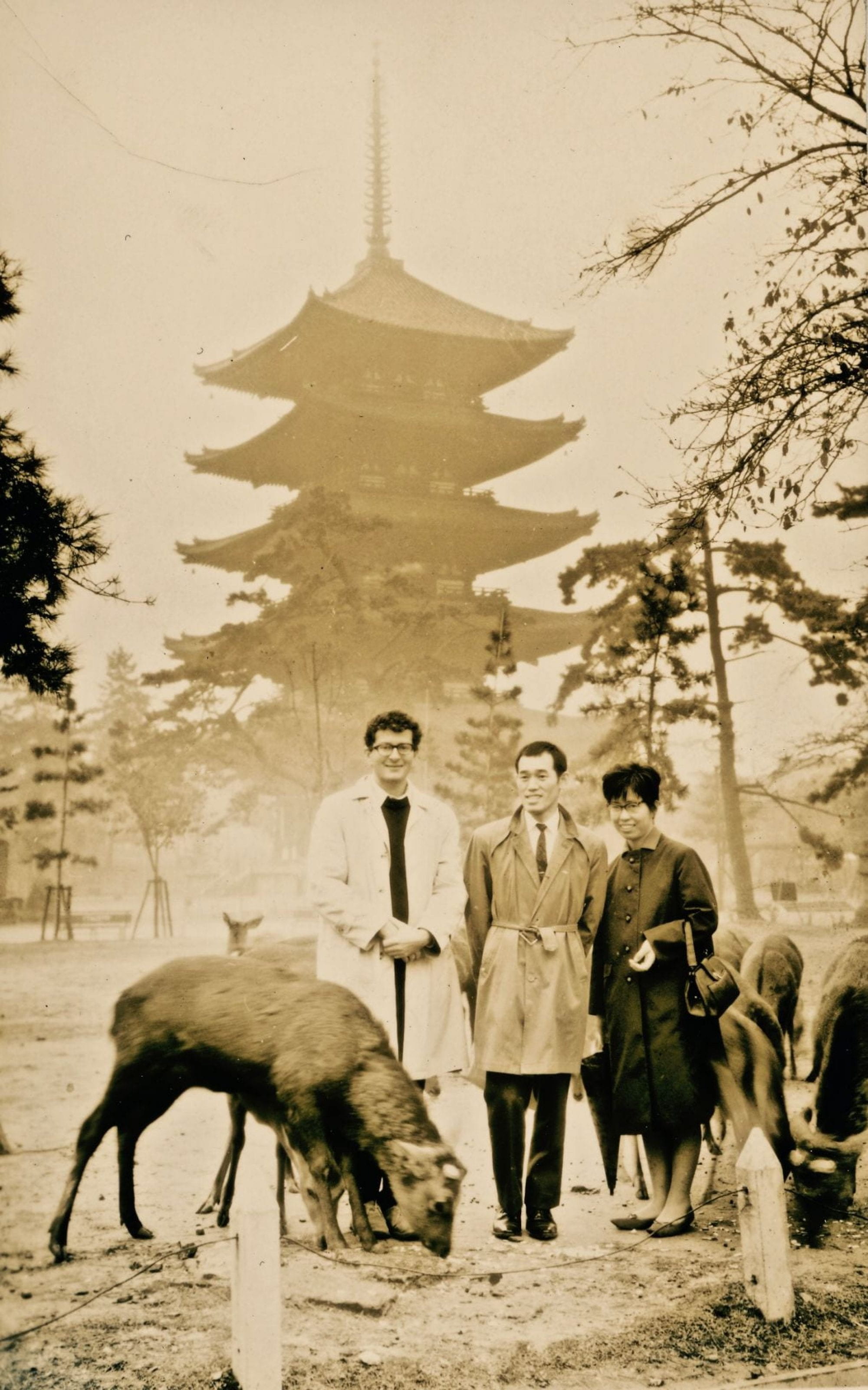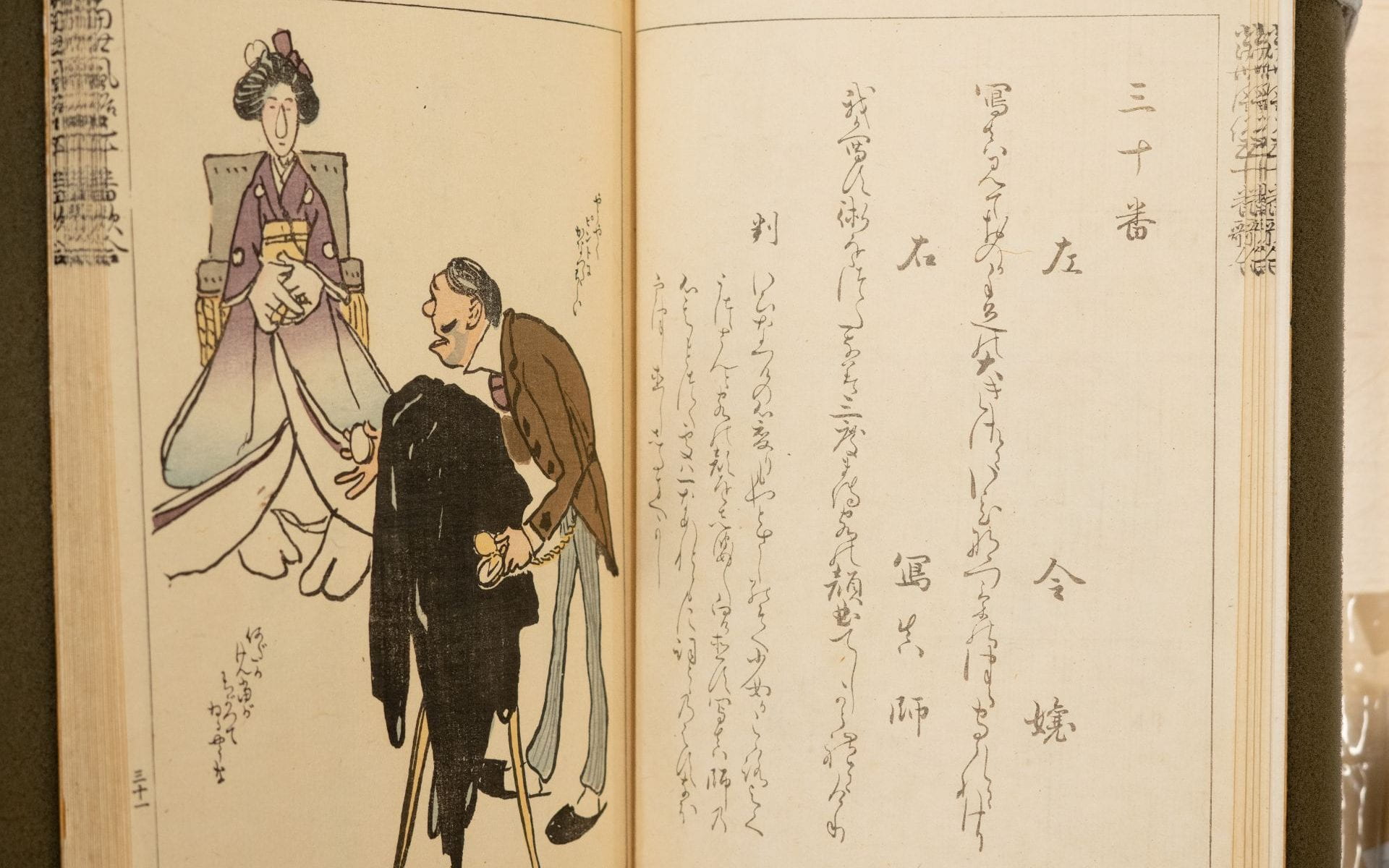 Artist: Asai Chū 浅井忠 (Japanese,1856 – 1907)
Artist: Asai Chū 浅井忠 (Japanese,1856 – 1907)
Author: Ikebe Tōen 池邊 籐園 (Japanese, 1861? – 1923)
Title: Tōsei fūzoku gojūban uta awase shita 当世風俗五十番歌合 下
Medium: Full color woodblock book print; ink and color on paper
Publisher: Tokyo: Yoshikawa Hanshichi
Gift of Arthur Tress. Box 33, Item 22, 1 of 2.
https://franklin.library.upenn.edu/catalog/FRANKLIN_9977502554203681
Tōsei fūzoku gojūban uta awase, or Fifty Modern Genre Scenes Compared in Verses, is a whimsical, comic, tongue-in-cheek commentary on the societal trends during the modernized Meiji period. It has two volumes containing fifty uta awase composed by a close friend of Asai Chū, Ikebe Tōen. Uta-awase is a form of poetry contest in which each poem contains two competing parts. In Tōsei fūzoku gojūban uta awase, each poem consists of two verses juxtapositioning descriptions of individuals engaged in diverse occupations in traditional Japanese style compared to those presented in modernized Western style. Each pair of verses is followed by a “judgment” prose that declares who was the winner and why. On the other side of Ikebe Tōen’s poems are Asai Chū’s comic satirical illustrations of the contestants. The participants hail from various backgrounds within the shokunin or craftsman class, namely teachers, factory workers, photographers, and so on. The style of Asai Chū’s illustration is said to be influenced by the German satirical magazine Simplicissimus (1896–1967; hiatus 1944–54). Tōsei fūzoku gojūban uta awase is Asai Chū’s best known printed book design.
Asai Chū (1856 – 1907) is known as one of the most prominent Western-style (yōga) painters and teachers in the early Meiji period. Born to a samurai-class family, he was formally trained in the traditional Japanese flower-and-bird painting style. He then moved to Tokyo and became one of the first students at the government established Western-style art focused Technical Fine Arts School. Similar to most of his contemporaries, he studied Western-style oil painting under Italian painter Antonio Fontanesi. An established painter and art educator by 1900, Asai Chū was sent to France to study the techniques of the Impressionism school by the Japanese government. Upon his return two years later, he continued teaching and founded the Kansai Bijutsu-in (the Kansai Arts Institute.) Throughout his life, he taught numerous painters and print-makers who later become prominent characters in the Japanese art world, including Yasui Sōtarō and Umehara Ryūzaburō.
Other copies of this book series:
The Gerhard Pulverer Collection, Freer Gallery of Art (vol. 1-2)
San Francisco Public Library (vol. 1-2)
Iwase Bunko Library, Nishio City (vol. 1-2)
Portland Art Museum (vol. 1-2)
Ravicz Collection, Chiba City Museum of Art (vol. 1-2)
Selected Readings:
Hillier, Jack Ronald. The Japanese picture book: a selection from the Ravicz Collection. Harry N Abrams Inc, 1991, pp. 124-125.
Hillier, Jack Ronald. The art of the Japanese book. London: Published for Sotheby’s Publications by Philip Wilson Publishers; New York, 1987, pp. 996-997.
Merritt, Helen. Modern Japanese woodblock prints: the early years. University of Hawaii Press, 1990.
https://pulverer.si.edu/node/424/title/2
http://www.myjapanesehanga.com/home/artists/asai-chu-1856-1907
Posted by Yuqi Zhao
November 19th, 2019

